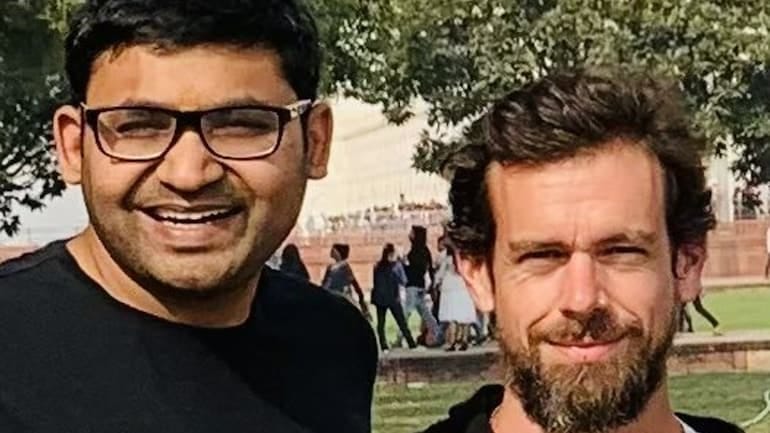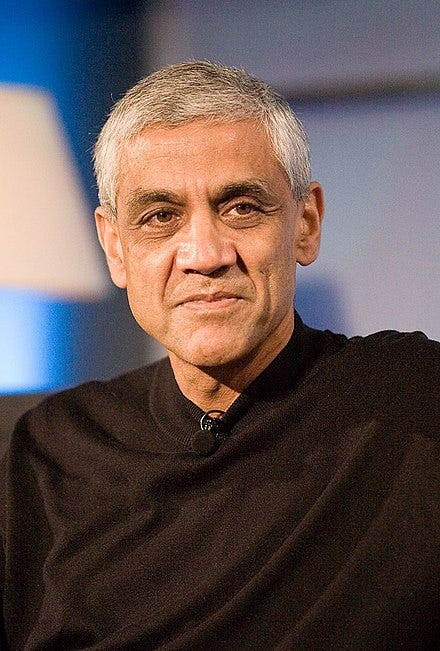Examining Twitter's Longstanding Espionage Problem
Who does Jack Dorsey really work for?
“[I]n war the victorious strategist only seeks battle after the victory has been won, whereas he who is destined to defeat first fights and afterwards looks for victory.” — Sun Tzu, Art of War
Before we discuss Twitter, let me discuss my bona fides. After all, most of what you read about Twitter is written by people who don’t have a lifetime ban on the service.
Yes, I was the first person banned for life from the platform — 2015, baby! — so naturally I have had a few thoughts on the platform and how crazy it is that the United States allowed Twitter to develop into a social media behemoth in the first place?
I was banned by then Twitter CEO, Dick Costolo, who admitted that I wasn’t violating any policies but that I was a problem because I made the platform advertiser unfriendly. Whatever man.
In fact it was because I made Costolo look bad. How such a thing was possible, I couldn’t say. Maybe don’t put failed stand-up comedians up as your CEO?
The so-called Twitter trolls were Costolo’s scapegoat for why he couldn’t get the business model to work but I argued at the time that there was no business model that would make Twitter work because the social network didn’t have “real identity” on the platform.
We will probe why “real identity” is so important in a moment in advertising networks but suffice it to say, I’ve called this one for awhile. Yes, I’ve even written about this problem way back in 2015 when I got banned for life. The stock has been relatively flat since — a feat all the more interesting given that Google and Facebook have grown by leaps and bounds since.
I reached the conclusion a few years ago that even if I were given my Twitter account back, I wouldn’t take it. Twitter is a battlefield, not a business, and it is a battlefield shaped against us by our enemies. It is the ideological terrain and so far, it has been very effectively weaponized against us. You must read Sun Tzu to really understand it: “And therefore those skilled in war bring the enemy to the field of battle and are not brought there by him.” I have no desire to go into a killing field.
When I was on the platform someone was buying me fake followers — and then notifying to Twitter that I had fake followers and suspending my account.
But there’s been a more interesting phenomenon at play — Twitter has become the Indian social network— specifically the Congress Party platform.
Much of the fight over Twitter in India can be seen as a fight between the BJP Indians and the Congress Party Indians. To be blunt these factions hate one another and are engaged in a blood feud over the future of the subcontinent. You might think these intra-Indian rivalry things don’t matter but America has been importing their caste system into the US.
Yes, Twitter’s foreign espionage problem is well known — they just jailed some Saudis over it — and it has been going on from the beginning.
Mudge’s complaint mentioning Indian spying within the company is baked into the platform the very earliest.
Those who made the call to kick me off the platform included Tina Bhatnagar and Vijaya Gadde, both of whom are Indian born. “We perma suspended Chuck Johnson even though it wasn't direct violent threats. It was just a call that the policy team made,” Bhatnagar said at the time. Bhatnagar decamped for the scam site Coinbase.
Gadde apparently also made the call about Trump’s account when Dorsey was vacationing in French Polynesia. In other words, they are just making it up as they go along. Which we all kind of knew all along, didn’t we?
Why is Twitter so Indian? The answer is that was the de facto deal Jack Dorsey cut to get Vinod Khosla’s cash for Square — which grew to be a much larger share of Dorsey’s net worth.
Here’s how Dorsey described his relationship with Khosla to the New York Times’s Nellie Bowles in 2018.
“Vinod is deeply principled, and therefore sometimes difficult to work with,” Jack Dorsey, the chief executive of Twitter and Square, wrote in an email. Mr. Khosla has been a mentor and adviser on both companies and is a frequent dining companion. (Mr. Dorsey also fasts until dinner.) “But that comes from a place of putting what he cares about above all else.”
Isn’t that an interesting choice of words?
Back when Dorsey ran both Twitter and Square there were a lot of people who commented on how you can’t run two publicly traded companies simultaneously.
But what if Dorsey’s absenteeism was by design? What if the Indian deep state wanted Jack’s eyes off the ball so it could take over Twitter?
I said at the time that Twitter was being used to cause riots around the world, including in India. Dorsey has even incited some of those problems in India.
“Jack Dorsey is a beautiful man with the impossible job of making everyone happy,” I told the Wall Street Journal in 2020 when news broke of Dorsey’s friendship with me. I was right, of course, but then I often am.
But some groups—namely the Indians—Dorsey had gone to extraordinary lengths to make happy. Why?
Consider that Khosla comes from a long line of military people.
“Frankly, the only people I knew when I was growing up were Army people. You know how the Army is. You don't even meet anybody in business,” Khosla once said.
A write up makes it clear:
"Vinod Khosla's childhood in India instilled within him a set of priorities and morals that enabled his innate entrepreneurial spirit to reach its full potential in America. Khosla was born into an "officer caste," on January 28, 1955, as the son of an army officer. Though his father encouraged Vinod Khosla to enlist, Vinod Khosla dreamed of starting a Silicon Valley company at the age of fifteen. After he graduated from the Indian Institute of Technology, he encountered frustration in attempting to start an India-based company."
The obvious question is, did he really turn down the family profession? Or is he simply operating on another battlefield?
I leave to others to judge but his investments do seem to me to be sorts of investments that an Indian close to the Chinese would, in fact, be making. (Let’s not forget that Khosla’s Sun Microsystems was purchased by none other than the Chisraeli Oracle.)
That’s not to say that the Square investment was a bad call either.
…in 2009, Vinod Khosla’s venture firm led a $10 million investment round, valuing shares at 22 cents each. The $10 million investment gave the company a $40 million valuation, before it had even launched its square-shaped mobile credit card swipers to the public.
Now, Khosla Ventures stands to make back its investment almost 60 times over. The firm was investing out of a $1 billion fund, and the Square investment alone will return 60 percent of the fund.
This is why Vinod remains one of the masters. He distracts Jack while making millions on Square.
Now if only I could figure out what he’s doing with this litigation against the Coastal Commission…
And so, with all that in mind, I have finally gotten around to reading the claims made in Mudge’s whistleblower complaint, which seems awfully conveniently timed.
Candidly I find a lot of this Gen X whining to be a bit much and that’s somewhat the spirit with which I read Mudge’s complaint.
For what it’s worth I have long argued that the problem with Twitter and Facebook — and all ad based supported social media platforms — is that they require Ponzi scheme economics. I think it’s incumbent on a lot of us to transition away from these platforms before they cause real problems, beyond the ones they already have.
Metcalfe’s Law is how most of the Silicon Valley social networking properties are valued.
I first encountered the law when I found a copy of Networks, Crowds, and Markets: Reasoning about a Highly Connected World at Peter Thiel's home in New Zealand.
The basic gist of the law is that a network's value increases in proportion to the square of its nodes. For social networks like Twitter or Facebook, each additional user improves the overall experience of existing users, through adding relationship opportunities, idea sharing, interactions, and so on.
Is it true for social media? Of course it isn’t. Some nodes are more valuable than others and the most valuable networks are the ones that are seemingly hidden from others.
Metcalfe’s Law has been used to justify some really weird economic models in the Bay Area (read: Ponzi schemes).
With Ponzi schemes you eventually run out of other people’s money. The same, I suspect, is true for other currencies. Eventually you run out of people’s attention.
The core innovation in social media is real identity, that’s what Sensei Thiel says anyway, and both he and Frances Haugen agree. Haugen told Ian Bremmer of the Eurasia Group that she thinks there’s a serious fraud issue with respect to which users are bots and which are people. She thinks that Musk is more or less right to raise this issue. I agree.
But Musk should have made those points before he agreed to buy the company. Could it be that a lot of the subpoenas are about something more interesting at play? Like, say, examining the white collar criminal nature of a lot of Musk’s friends?
We’re already learning from the Washington Post that David Sacks lied about whether or not he received non-public material information about Musk’s impending purchase. What else will we learn when, say, Joe Lonsdale or Keith Rabois are fully scrutinized? Curiously both Rabois and Sacks are hosting the NRSC/Rick Scott Take Back The Senate event in Miami on 9/18. Something tells me that the Senate won’t be taken back…
Real identity means making a serious effort to separate bots from people but if your financial bonus is calculated by how many users you have, well… that’s really not in your own financial interest is it?
There are ways to increase the value of each node in the equation.
You simply collect more data about someone so as to target them more fully with ads. (Why not their DNA? Well, that makes us uncomfortable.)
The claims made in the Mudge complaint were altogether unsurprising to anyone who has been paying attention.
But so few people do pay attention, don’t they?
They don’t notice, for instance, the role that Deray McKesson and Jack Dorsey played in fomenting rioting with Black Lives Matter. The matter was litigated all the way to the Supreme Court and remains ongoing.
Or the way, McKesson has promoted suppression of science on COVID. McKesson pointed out this chart I posted which showed the differences in COVID based upon genetics.
Arguably McKesson’s anti-police activism were a kind of foreign activism given that BLM was used by the Chinese to cause chaos.
As I said, Twitter is not a business but a battlefield.
Or as Sun Tzu would also have it, “Hold out baits to entice the enemy. Feign disorder, and crush him.”
Or failing that, promote disorder.




